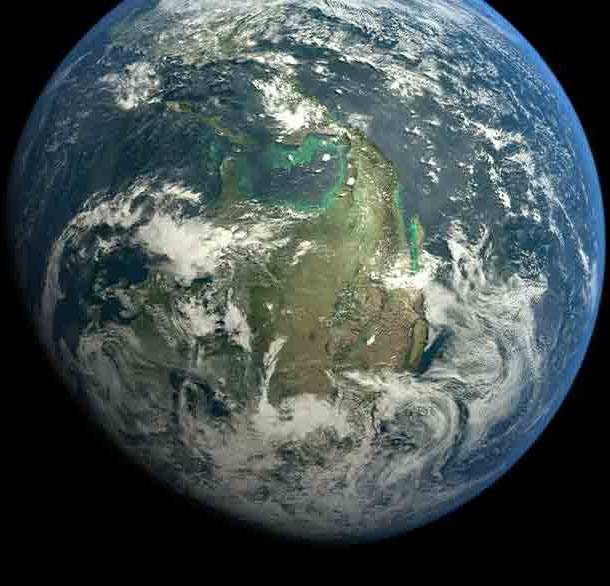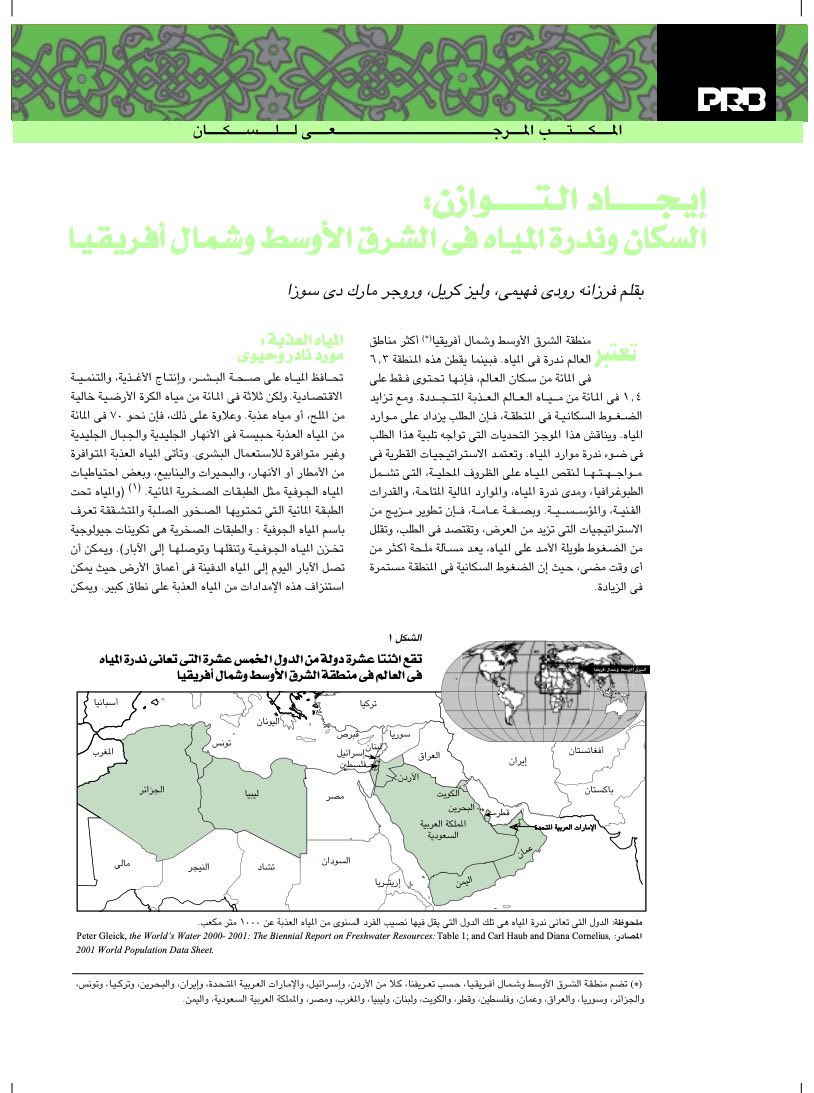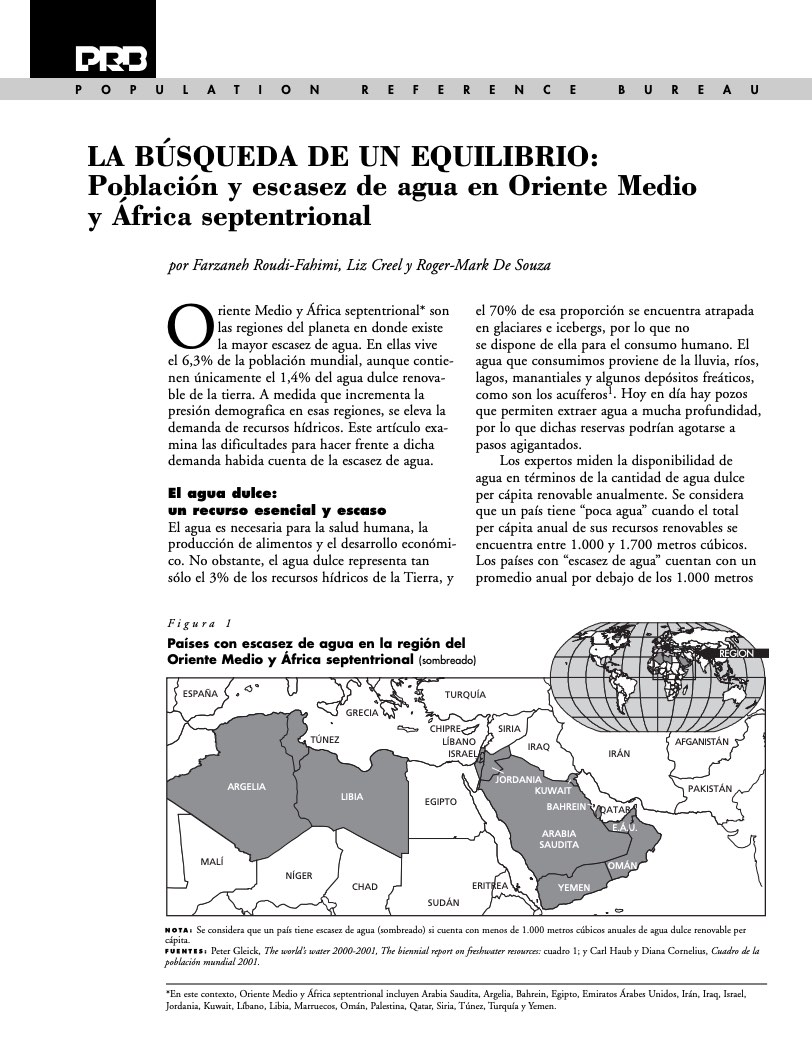How Many People Have Ever Lived on Earth?
The global population milestone of 8 billion represents nearly 7% of the total number of people who have ever lived on Earth.

The global population milestone of 8 billion represents nearly 7% of the total number of people who have ever lived on Earth.
(2004) As the 2000 election made clear, the presidential election actually is a series of 51 “winner take all” contests in each state and the District and Columbia. The candidate who wins a particular state is entitled to all of that state’s electoral votes—the equivalent of that state’s total number of senators and representatives.

(2002) The Middle East and North Africa (MENA)* is the most water-scarce region of the world. Home to 6.3 percent of the world's population, the region contains only 1.4 percent of the world's renewable fresh water.

Attempts at immigration reform should address issues that have been with us, in various guises, for at least a century.
(2009) While the main function of the U.S. decennial census is to provide counts of people for the purpose of Congressional apportionment, the primary purpose of the ACS is to measure the changing social and economic characteristics of the U.S. population.
(2006) The United States is set to reach a milestone in October. Joining China and India, it will become the third country to be home to at least 300 million people.
(2002) The Middle East and North Africa (MENA)* is the most water-scarce region of the world. Home to 6.3 percent of the world's population, the region contains only 1.4 percent of the world's renewable fresh water.

(2002) The Middle East and North Africa (MENA)* is the most water-scarce region of the world. Home to 6.3 percent of the world's population, the region contains only 1.4 percent of the world's renewable fresh water.
Investments in young people are crucial to achieving a demographic dividend. The demographic dividend provides a framework for promoting investments in youth as fertility declines and population age structure changes. Sustained investments in voluntary family planning, health, education, and job growth can help to guide a country towards a demographic dividend.